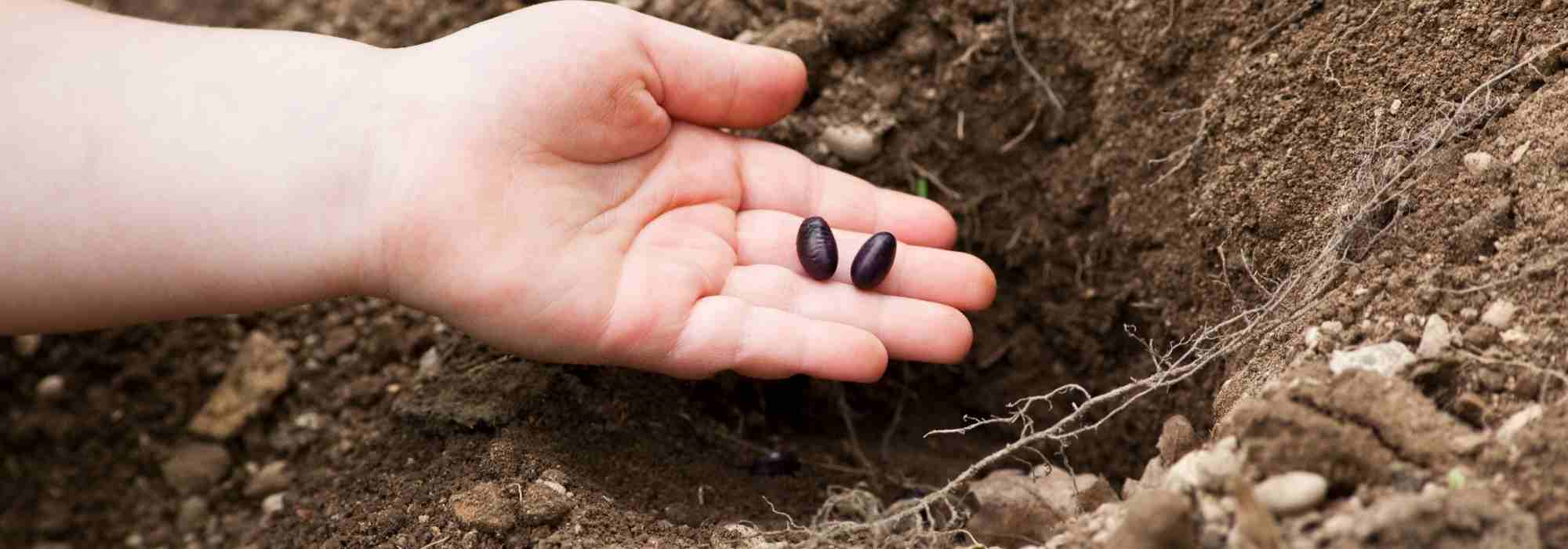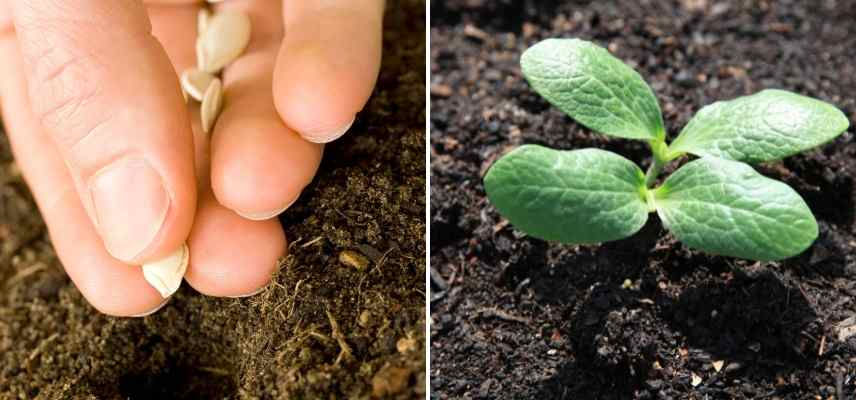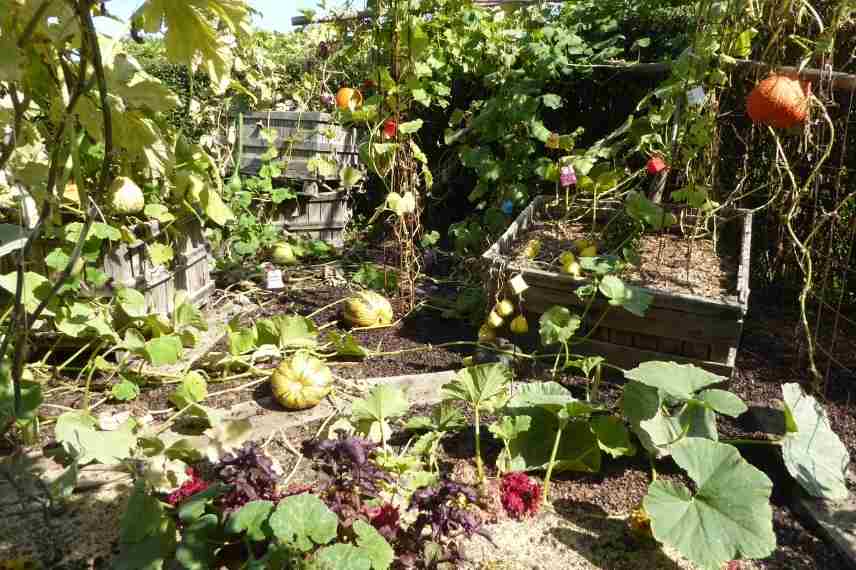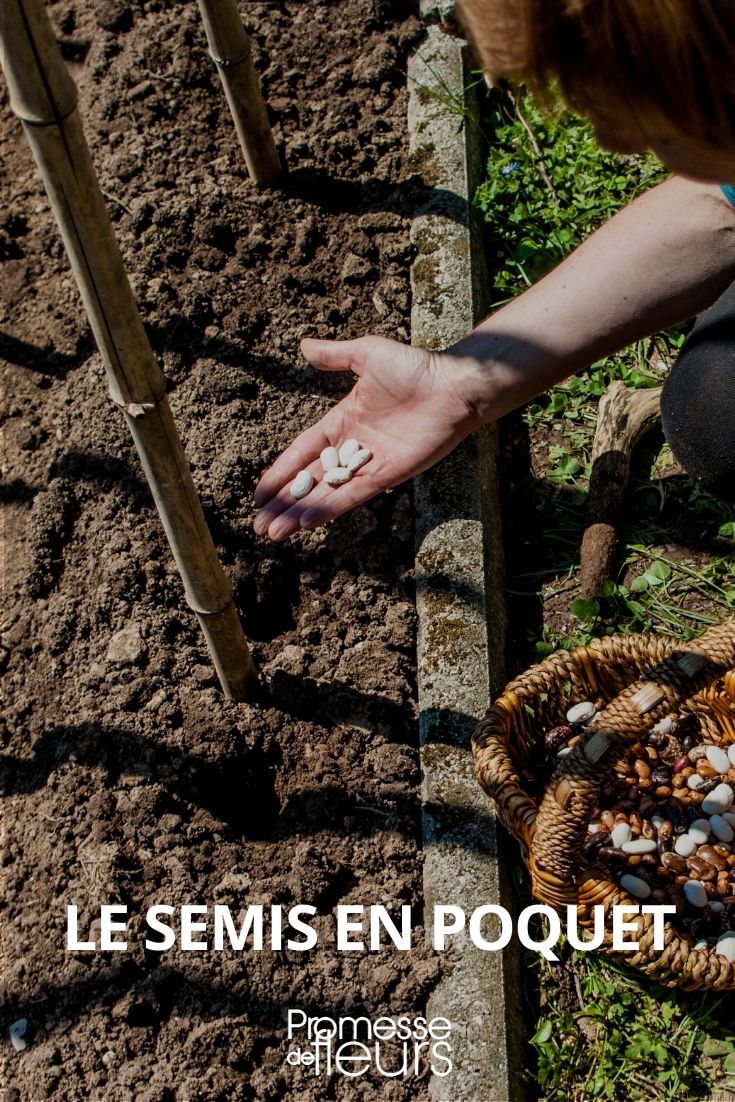
Station sowing: what is it?
How and for which plants is sowing in clumps done?
Contents
Sowing in clusters involves placing several large seeds in a small hollow of soil in the vegetable garden. It is a widely used and effective technique for achieving, in particular, good harvests of squashes or legumes. Discover our tips for successfully mastering this unique and efficient sowing method in the vegetable garden.
What is sowing in clumps?
Sowing in clusters is done in situ and involves placing several seeds (often of considerable size) in a small hole dug by hand or with a tool (such as a hoe). The clusters are usually topped with supports for climbing plants that will cling to them (beans, pole peas, cucurbits, etc.).
Other plants are also involved: garden peas, sweetcorn, broad beans, squashes, nasturtiums, ipomoeas, and other sweet peas can be sown in clusters.
Most of these plants and vegetables do not tolerate transplanting. This is largely why they undergo this type of sowing.
As you may have deduced, clusters are only made late in the season. All the plants mentioned above are exotic, frost-sensitive, and will wait until May before being sown.

Sowing in clusters of courgettes
Read also
How to sow in a seed tray?How to sow in clusters?
In practice, nothing could be simpler:
Prepare the soil
Before setting up your clusters, prepare the soil by loosening it with a broadfork and refining it with a rake. If your vegetable garden is permanently mulched, there is little need for soil work. Remove the mulch from the sowing area and move on to the next step.
Space the clusters
Mark the location of your clusters. The distance between them depends on the species you intend to grow. It will be significant for cucurbits (1m in all directions) and at least 50 cm for climbing beans and peas that will be supported by stakes.
Sow the seeds
Place your seeds in the previously formed hollow (remember to water using a watering can if the soil is dry). Place the seeds without burying them more than twice their diameter. Cover them with a well-aerated compost (such as seed compost) or light soil to encourage germination. The substrate should be moist but never waterlogged.
Finally, after germination, remove any excess or weak plants.
Advantages and disadvantages
Successful sowing in clusters will give you strong seedlings. The on-site rooting and the absence of stress from transplanting will result in plants that are more resistant to diseases and drought. You also save a good number of seeds by working precisely. Sowing in clusters is synonymous with verticality in the vegetable garden: this aspect is both aesthetic and practical for optimising growing space.
It is possible to keep several seeds per cluster in the case of legumes and to select the most vigorous plant in the case of squashes or maize.
However, clusters are dependent on the weather like any sowing in open ground. If your soil is not warm enough or well-drained, you risk the failure of your sowing due to rotting. Therefore, it is important to be patient and wait for the end of the ice saints before proceeding, especially since the plants involved in this technique are very sensitive to cold.

Vertical cultivation of cucurbits in the vegetable garden at the Parc Botanica in Angers (© Gwenaëlle David)
François’s advice: Don’t hesitate to sprinkle your seeds with charcoal powder to prevent damping-off (a fungal disease that causes seeds to rot). This issue is quite common for large seeds sown in clay soil, waterlogged or on poorly decomposed compost.
- Subscribe!
- Contents
































Comments